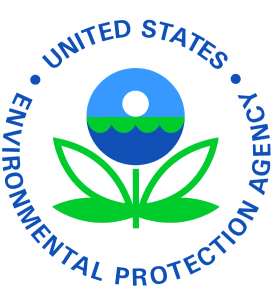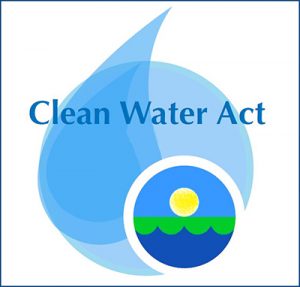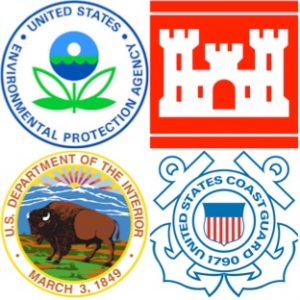 The Chairman of the House Energy and Commerce Committee has released a “discussion draft” of the committee’s climate bill. The legislation is over 600 pages long, but the Committee has also released a summary of this legislation, which is entitled the Climate Leadership and Environmental Action for our Nation’s Future Act or the CLEAN Future Act. Here are some highlights.
The Chairman of the House Energy and Commerce Committee has released a “discussion draft” of the committee’s climate bill. The legislation is over 600 pages long, but the Committee has also released a summary of this legislation, which is entitled the Climate Leadership and Environmental Action for our Nation’s Future Act or the CLEAN Future Act. Here are some highlights.
Articles Tagged with EPA
EPA Will Soon Issue the Latest Revision to the Risk Management Program (RMP) Chemical Release Rules
 On November 21, 2019, EPA released a pre-publication copy of its Reconsideration of the revised Risk Management Program (RMP) Rules. In an accompanying statement, the agency noted that it has taken steps to “modify and improve” the existing rule to remove burdensome, costly and unnecessary requirements while maintaining appropriate protection (against accidental chemical releases) and ensuring responders have access to all of the necessary safety information. This action was taken in response to EPA’s January 13, 2017 revisions that significantly expanded the chemical release prevention provisions the existing RMP rules in the wake of the disastrous chemical plant explosion in West, Texas. The Reconsideration will take effect upon its publication in the Federal Register.
On November 21, 2019, EPA released a pre-publication copy of its Reconsideration of the revised Risk Management Program (RMP) Rules. In an accompanying statement, the agency noted that it has taken steps to “modify and improve” the existing rule to remove burdensome, costly and unnecessary requirements while maintaining appropriate protection (against accidental chemical releases) and ensuring responders have access to all of the necessary safety information. This action was taken in response to EPA’s January 13, 2017 revisions that significantly expanded the chemical release prevention provisions the existing RMP rules in the wake of the disastrous chemical plant explosion in West, Texas. The Reconsideration will take effect upon its publication in the Federal Register.
EPA and the Corps of Engineers Repeal the 2015 “Waters of the United States” Rule
 The pre-publication version of the final rule to be promulgated by EPA and the U.S. Army Corps of Engineers (ACOE) to repeal the 2015 redefinition of the Clean Water Act’s term “Waters of the United States” which is the linchpin of these agencies’ regulatory power under the CWA, was made available on September 12, 2019. The rule should be published in the Federal Register in the next few weeks, and it will be effective 60 days thereafter. Many challenges are expected to be filed in the federal courts.
The pre-publication version of the final rule to be promulgated by EPA and the U.S. Army Corps of Engineers (ACOE) to repeal the 2015 redefinition of the Clean Water Act’s term “Waters of the United States” which is the linchpin of these agencies’ regulatory power under the CWA, was made available on September 12, 2019. The rule should be published in the Federal Register in the next few weeks, and it will be effective 60 days thereafter. Many challenges are expected to be filed in the federal courts.
DC Circuit Issues Two Important Clean Air Act and Administrative Law Decisions
DC Circuit Upholds EPA’s Latest RCRA Recycling Rule
 On July 2, 2019, the U.S. Court of Appeals for the District of Columbia Circuit decided the case of California Communities Against Toxics, et al. v. EPA. In this decision, the court rejected the latest petition to strike or vacate EPA’s 2018 revisions to the Resource Conservation and Recovery Act (RCRA) hazardous waste recycling rules. In 1985, EPA promulgated a new regulatory definition of “solid waste,” which is the linchpin of the agency’s very stringent hazardous waste management rules. (See the rules located at 40 CFR Sections 260-268.) Unless a material is a “solid waste” as defined by the rules, it cannot also be a hazardous waste.
On July 2, 2019, the U.S. Court of Appeals for the District of Columbia Circuit decided the case of California Communities Against Toxics, et al. v. EPA. In this decision, the court rejected the latest petition to strike or vacate EPA’s 2018 revisions to the Resource Conservation and Recovery Act (RCRA) hazardous waste recycling rules. In 1985, EPA promulgated a new regulatory definition of “solid waste,” which is the linchpin of the agency’s very stringent hazardous waste management rules. (See the rules located at 40 CFR Sections 260-268.) Unless a material is a “solid waste” as defined by the rules, it cannot also be a hazardous waste.
EPA and States Take Aim at PFAS
As Some States Use the Clean Water Act to Delay Energy Projects, EPA Issues New CWA 401 Guidance
In just the past few weeks, three states have used their Clean Water Act 401 authority to delay, for an indefinite period, FERC-authorized pipeline expansion projects. On May 6, 2019, the Oregon Department of Environmental Quality denied, without prejudice, Jordan Cove’s application for a Section 401 water quality certification. Jordan Cove plans to build an LNG export terminal at Coos Bay, Oregon, if it can obtain the necessary federal and permits. Under Section 401(a) of the Clean Water Act, any applicant for a federal permit to conduct any activity, including the operation of facilities which may result in any discharge into the navigable waters, shall provide the permitting agency a certification from the State in which the discharge may originate that any such discharge will comply with the applicable provisions of the Clean Water Act, including effluent limitations and state water quality standards. The States have a “reasonable time”—which shall not exceed one year after the receipt of the 401 application—in which to act, or the state’s authority may be waived by this inaction. The Oregon DEQ concluded that Jordan Cove has not demonstrated that its project, as presently configured, will satisfy state water quality standards. The 401 applications submitted by Transcontinental Gas Pipe Line Co. (Transco) to the New Jersey Department of Environmental Protection and the New York State Department of Environmental Protection were similarly rejected without prejudice on May 15, 2019 (New York) and June 5, 2019 (New Jersey). This use of the states’ 401 authority has frustrated plans to build and operate LNG pipelines around the country.
Future Environmental Rulemaking Proceedings Listed in the Spring 2019 Unified Federal Agenda
EPA Issues Interpretive Statement on Application of NPDES Permit System to Releases of Pollutants to Groundwater
 On Tuesday, April 23, 2019, in a development of interest to practically anyone who operates a plant or business, EPA published its Interpretive Statement in the Federal Register. (See 84 FR 16810 (April 23, 2019).) After considering the thousands of comments it received in response to a February 20, 2018, Federal Register notice, EPA has concluded that “the Clean Water Act (CWA) is best read as excluding all releases of pollutants from a point source to groundwater from a point source from NPDES program coverage, regardless of a hydrological connection between the groundwater and jurisdictional surface water.”
On Tuesday, April 23, 2019, in a development of interest to practically anyone who operates a plant or business, EPA published its Interpretive Statement in the Federal Register. (See 84 FR 16810 (April 23, 2019).) After considering the thousands of comments it received in response to a February 20, 2018, Federal Register notice, EPA has concluded that “the Clean Water Act (CWA) is best read as excluding all releases of pollutants from a point source to groundwater from a point source from NPDES program coverage, regardless of a hydrological connection between the groundwater and jurisdictional surface water.”
In a First-Ever Move, EPA Asks Industry and Public What Agency Regulations to Repeal, Replace or Modify
Yesterday, the Environmental Protection Agency published a notice in the Federal Register seeking public comments on any “regulations that may be appropriate for repeal, replacement, or modification.”
This notice invites an unprecedented level of review over EPA’s entire existing body of regulations. The notice aims to implement the President’s February 24 Executive Order 13777 Enforcing the Regulatory Reform Agenda “to alleviate unnecessary regulatory burdens.” The notice describes those regulations vulnerable to overhaul as those that:
(a) Eliminate jobs, or inhibit job creation;
(b) Are outdated, unnecessary, or ineffective;
(c) Impose costs that exceed benefits;
(d) Create a serious inconsistency or otherwise interfere with regulatory reform initiatives and policies.
The comment period closes only 30 days out, on May 15, 2017. Contact your counsel for more information or to request assistance in commenting.
 Gravel2Gavel Construction & Real Estate Law Blog
Gravel2Gavel Construction & Real Estate Law Blog



